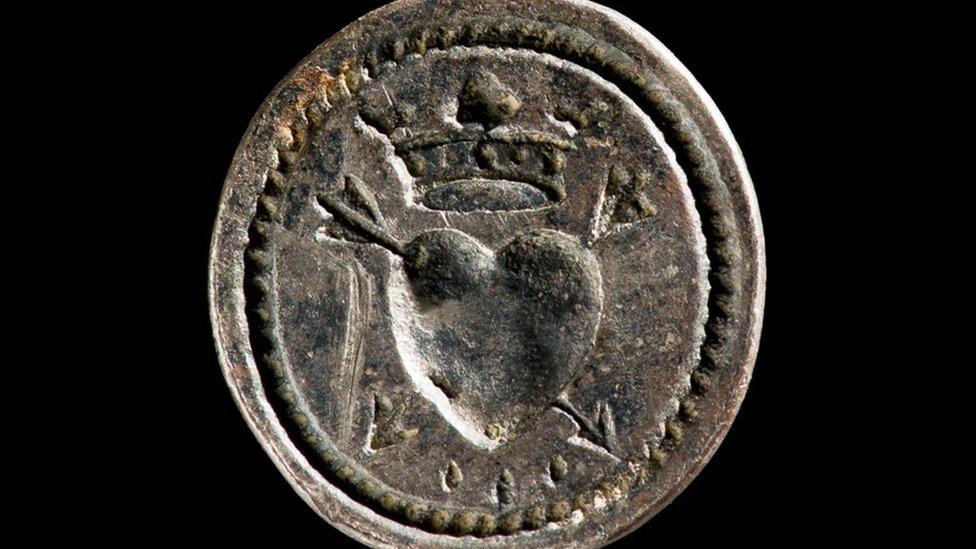13th Century seal on show at museum sparks debate
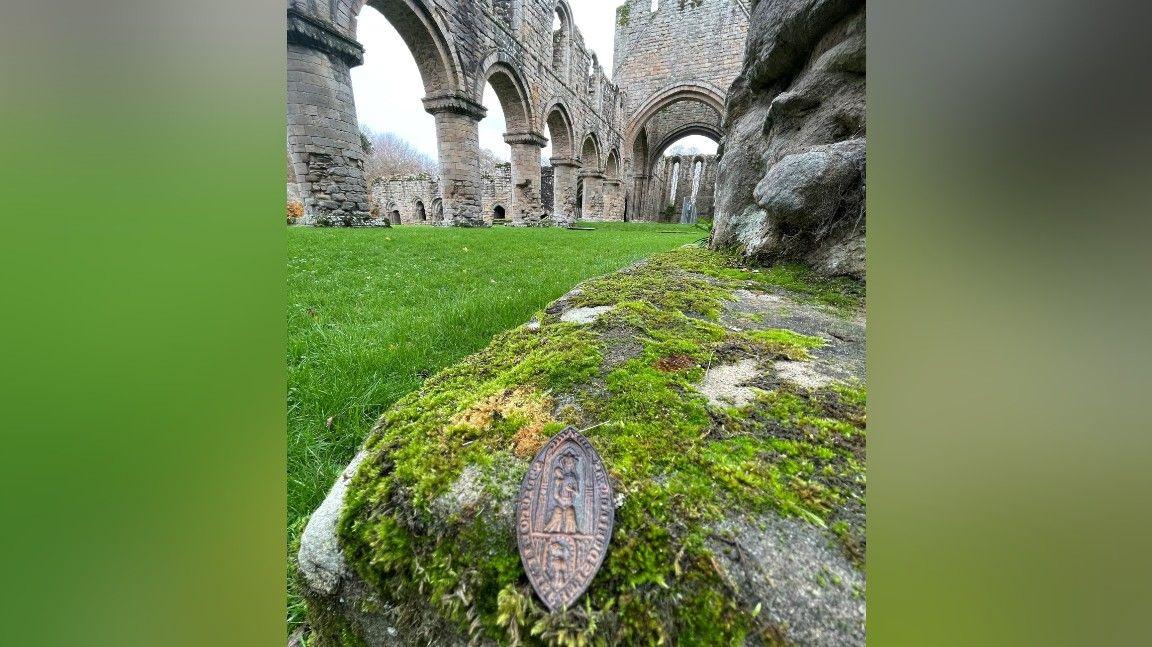
The medieval seal at Buildwas Abbey where it is believed it originated
At a glance
A medieval wax seal believed to have belonged to Nicholas, Abbot of Buildwas has been discovered
Steve Parker, a metal detectorist in Shropshire, uncovered the seal
A museums volunteer and medieval specialist believes the seal to be proof of a medieval scam
Mr Parker believes the seal is authentic and belonged to another known Nicholas abbot
- Published
A new museum exhibit, a13th Century seal found by a metal detectorist, has sparked debate amongst historians.
Experts differ about who the matrix seal, on display at Much Wenlock Museum, in Shropshire, belonged to.
Steve Parker, who found the seal, believes it was the seal of Nicholas, Abbot of the Cistercian Abbey at Buildwas.
However, there were two abbots called Nicholas at the abbey and one historian believed Mr Parker's seal could be a forgery.
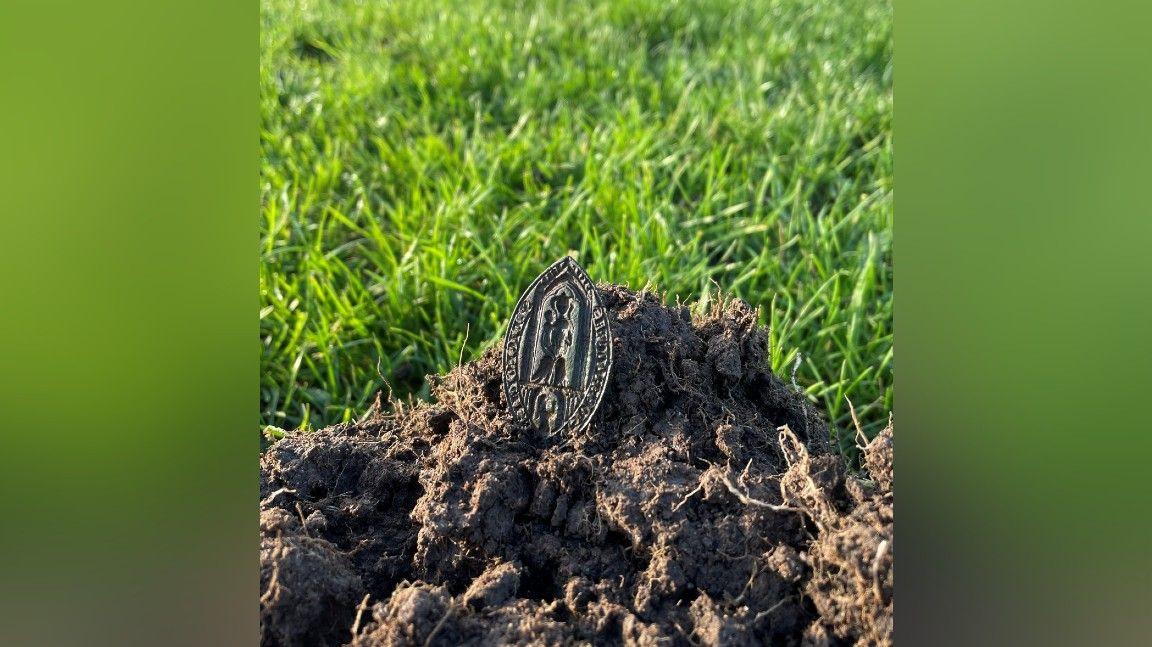
The medieval wax seal pictured immediately after it was found
The seal was found in November 2022 and reported to the West Midlands Portable Antiquities Scheme.
It depicted the Virgin Mary holding the infant Jesus and, in the lower third, the kneeling figure of a named abbot, with hands in prayer.
Susheela Burford, portable antiquities scheme finds liaison officer, said it was inscribed stating it was the seal of Nicholas, Abbot of the Abbey.
Museums service curator Emma Kate Lanyon said at the time the seal was made the Abbey was prospering and derived much of its income from the sale of fleeces from its flocks of sheep.
The abbot would have needed a seal to stamp the records.
But historian John Cherry uncovered a surviving seal of Nicholas the Abbot of Buildwas with a document dated 1250, in the archives. It depicted a standing figure of St Chad.
He reasoned the seal found by Mr Parker could be a forgery and "could explain why it was disposed of, rather than broken at the end of the abbacy".
According to records, there were at least two abbots called Nicholas which may match the date of the seal. One from 1236 to 1256, and the other from 1345 to 1348.
Mr Cherry's evidence correlates to the first Nicholas' abbacy. Mr Parker believes his seal relates to the second.
"I don’t feel it’s a forgery, as the style of the Virgin Mary with child above the Bishop fits in with the design of 14th century Buildwas seals," he said.
“The story I like is this: it’s recorded that the Abbey was pillaged and that the Abbott and monks were taken prisoner in around 1349/50, which is when ‘my’ Nicholas could have still been the abbot."
The seal will be subject to further research, the council said.
Follow BBC West Midlands on Facebook, external, X, external and Instagram, external. Send your story ideas to: newsonline.westmidlands@bbc.co.uk, external
Related topics
- Published19 November 2023
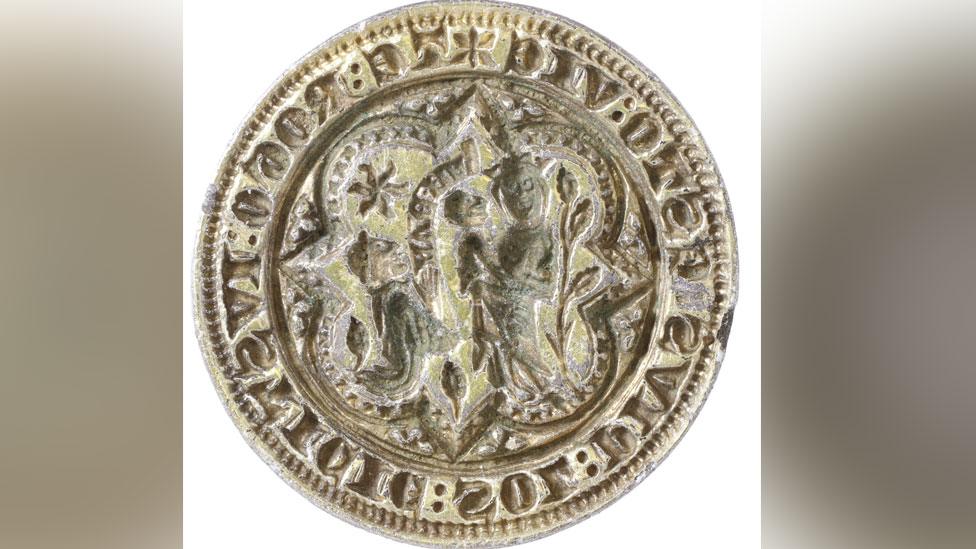
- Published27 October 2022
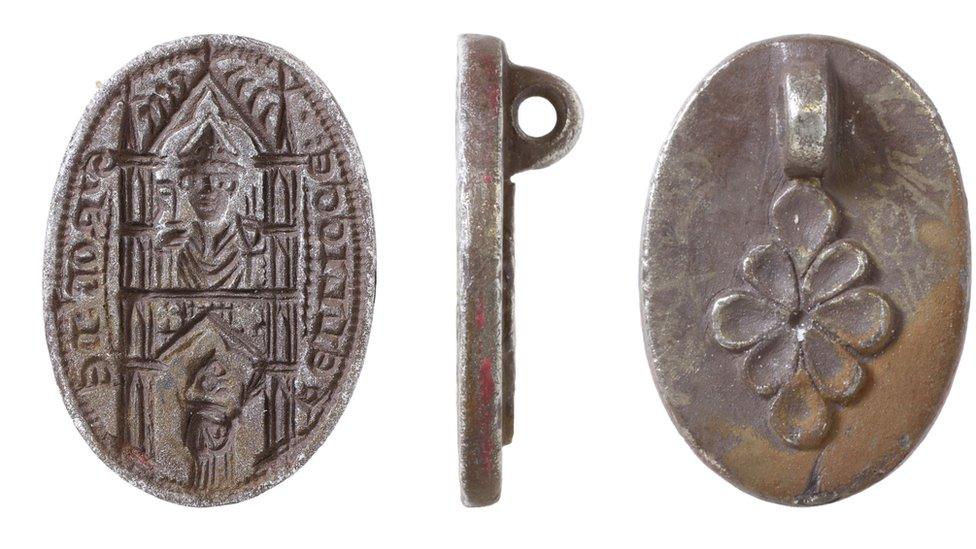
- Published4 February 2022
